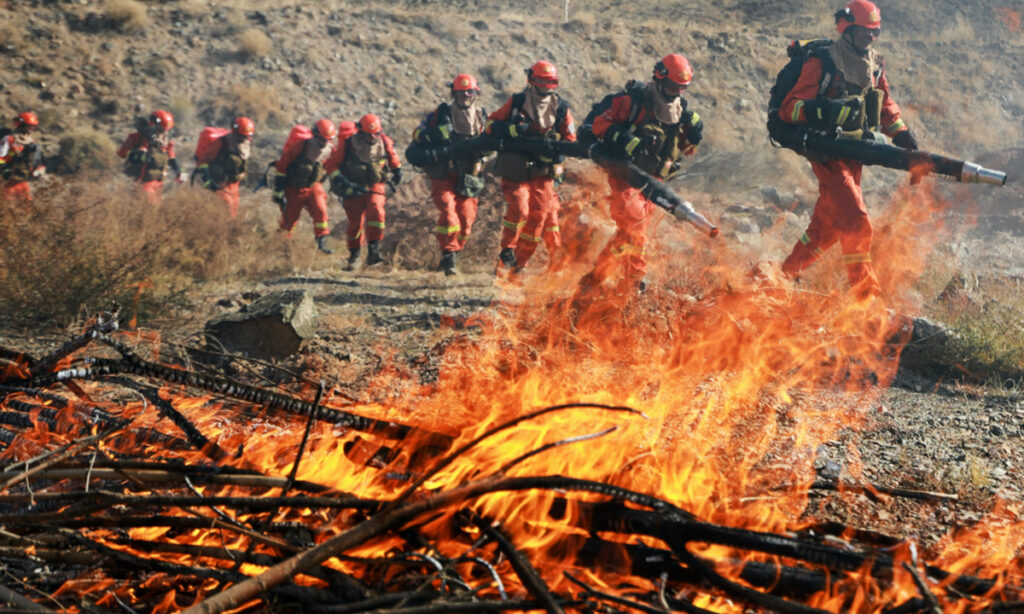China’s State Council has issued a new document on strengthening forest and grassland fire prevention and control, which is the first framework document of its kind issued by the Communist Party of China (CPC) Central Committee and the State Council since the founding of the People’s Republic of China, Zhang Yongli, director of the Office of the National Forest and Grassland Fire Prevention and Fighting Command said at Wednesday’s press briefing.
The new document has milestone significance in further enhancing the country’s comprehensive forest and grassland fire prevention and control capabilities, in particular, on major forest and grassland fire risk, to safeguard people’s lives and property and national ecological security, Zhang said.
Under the influence of global warming, increasing extreme weather and other factors, forest and grassland fire catastrophes occur frequently in many countries around the world, causing heavy losses and impacts. China also faced with the severe challenges caused by natural and social factors, according to the official.
Since 2018, China has seen remarkable achievements in forest and grassland fire prevention and firefighting, and the number of forest and grassland fires across the country has dropped significantly.
In 2021 and 2022, the number of forest fires and the area of affected forests stood at historic lows. In the 1980s, the annual average number of forest fires in China was more than 14,000, while the number was 616 in 2021, and 709 in 2022, Zhang said.
In the summer and autumn of 2022, an outbreak of forest fires successively occurred in several regions including Southwest China’s Chongqing, Central China’s Hunan Province, South China’s Guangxi Zhuang Autonomous Region, East China’s Jiangxi Province.
In April this year, North China’s Inner Mongolia Autonomous Region has dispatched several groups of firefighters to prevent the flames of a grassland fire in Mongolia from spreading across the China-Mongolia border.
Zhang said that the disaster prevention and control, monitoring and early warning are particularly important, including the satellite monitoring, aircraft monitoring patrol, monitoring from the forest watchtowers, ground patrol and online information.
From the history of forest fires in our country, 77 percent of major and large forest fires occurred in spring and 85 percent in northeastern regions of China. However, with frequent occurrence of extreme weather, the possibility of major and large forest fires in southwestern and other regions is also increasing year-by-year, Yang Xudong, an official with the Ministry of Emergency Management said at the press briefing.
The ministry has worked to scientifically respond to fire catastrophes in extreme weather, including setting up special plans to deal with major forest and grassland fires, annual forest aviation firefighting aircraft deployment, early warning with timely investigating and response, according to Yang.
The national fire and rescue administration said it has promoted the research, development and application of new firefighting equipment and multi-tech. More than 6,000 officers and 10 helicopters are deployed annually in areas with high-risky fire potential, according to the administration.
Chinese issued the document, Opinions on Comprehensively Strengthening Forest and Grassland Fire Prevention and Control under the New Circumstances on April 20 and required all the departments to implement the document, according to the National Forestry and Grassland Administration.
The document has 31 articles including the general requirements and deployment for key sectors, such as optimizing the system mechanism, strengthening the organization and command system and infrastructure development.
The document proposes that by 2030, the country’s capabilities in forest and grassland fire prevention and firefighting should be increased significantly, and the public’s awareness of fire prevention and the level of comprehensive prevention and control should be improved.
(Global Times)




